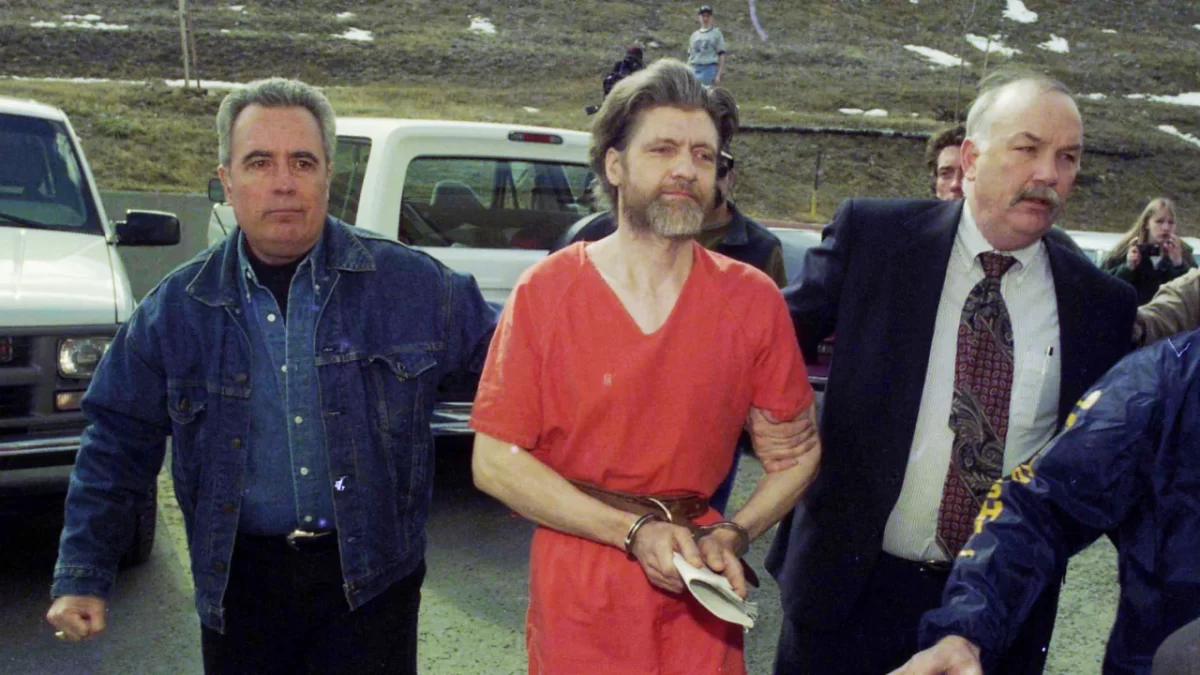Ted Kaczynski, the infamous Unabomber, was found dead in his North Carolina prison cell on Saturday, according to the Federal Bureau of Prisons. The 81-year-old former Harvard-trained mathematician was serving a life sentence without the possibility of parole for a series of bombings across the United States that resulted in three deaths.

Kaczynski was convicted for a series of bombings that targeted scientists, universities, and airlines between 1978 and 1995. He was transferred from a maximum-security Colorado prison to North Carolina in 2021 due to his declining health. The cause of his death was not immediately released.
The Unabomber’s Arrest and Legacy
The Unabomber’s arrest came in 1996 after authorities located him living in a primitive cabin in western Montana. Kaczynski pleaded guilty to setting 16 explosions that killed three people and injured 23 others in various parts of the country.
The deadly homemade bombs that Kaczynski sent by mail, including an altitude-triggered explosion on an American Airlines flight, significantly changed the way Americans sent packages and boarded airplanes. In 1995, a threat from the Unabomber to blow up a plane out of Los Angeles before the end of the July 4 weekend caused chaos in air travel and mail delivery. He later claimed the threat was a “prank.”
Kaczynski’s anti-technology beliefs led authorities on the nation’s longest and costliest manhunt. The FBI dubbed him the Unabomber because his early targets appeared to be universities and airlines.
The Manifesto and Breakthrough in the Case
In September 1995, The Washington Post, in collaboration with The New York Times, published Kaczynski’s anti-technology manifesto, “Industrial Society and Its Future.” The decision to print the manifesto was prompted by federal authorities, who were urged by Kaczynski to publish his treatise in a national publication in exchange for halting his terror attacks.
The publication of the manifesto led to a breakthrough in the case, as Kaczynski’s brother, David, and his wife, Linda Patrik, recognized the writing style and reported their suspicions to the FBI. Following the tip, authorities located Kaczynski in April 1996, living in a small 10-by-14-foot plywood and tarpaper cabin outside Lincoln, Montana. The cabin, which had been his residence since the 1970s, was filled with journals, a coded diary, explosive materials, and two completed bombs.
Unabomber Diagnosed as Paranoid Schizophrenic, Strikes Plea Deal to Avoid Death Penalty
Following a near-suicide attempt in his jail cell, Kaczynski requested to represent himself in court, dismissing his attorneys. He sought to center his defense on the belief that technology is a destructive force against humanity. To assess his mental competency for self-representation, Kaczynski consented to an evaluation by federal psychiatrist Dr. Sally Johnson. While Johnson determined that Kaczynski was indeed mentally competent to defend himself, she also diagnosed him as a paranoid schizophrenic.
In a last-minute development before the trial commenced, prosecutors and Kaczynski reached a plea deal. As a result, the prosecution withdrew their demand for the death penalty, instead requesting a life sentence without the possibility of parole.
U.S. District Judge Garland Burrell Jr., who presided over the case, condemned Kaczynski’s actions, stating, “The defendant committed unspeakable and monstrous crimes for which he shows utterly no remorse.”
Throughout his trial, Kaczynski vehemently opposed the idea of being labeled as mentally ill. He attempted to fire his attorneys when they proposed an insanity defense, ultimately pleading guilty to avoid this route. Personal journals released during the trial, at the request of the victims’ families, revealed that Kaczynski’s primary motive was “simply personal revenge.”
In his writings, Kaczynski expressed fantasies of killing individuals he despised, including government officials, police officers, computer scientists, and unruly college students. His attacks claimed the lives of computer rental store owner Hugh Scrutton, advertising executive Thomas Mosser, and timber industry lobbyist Gilbert Murray. Additionally, California geneticist Charles Epstein and Yale University computer expert David Gelernter were maimed by bombs in June 1993, during a two-day bombing spree.



